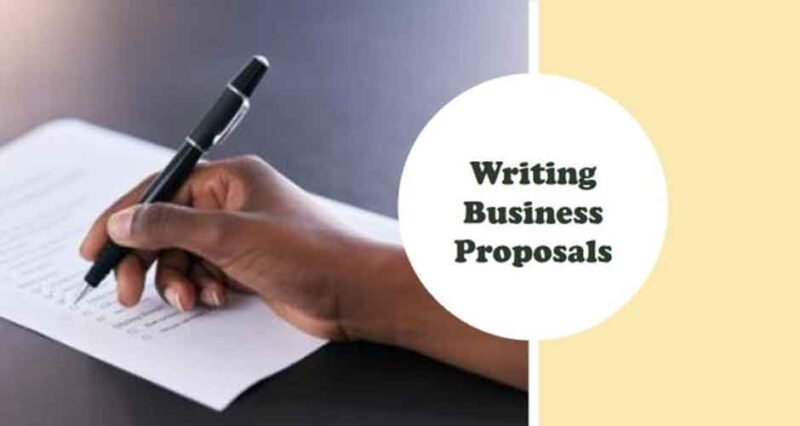
Nowadays, the increase in new start-ups and leverage of existing businesses has increased the business competition. Whether your business is in the early stages of growth or a medium-sized enterprise, building relationships with new clients is vital for your company’s growth.
One of the best ways to hook your potential clients is by writing a winning proposal that outlines your service or product uniquely. A well-crafted and appealing proposal means building more clientele and increasing the company’s revenue.
However, writing a successful proposal might be challenging for both new and existing businesses. Don’t worry; following some simple and effective practices mentioned in this post can easily bridge the gap between you and your potential client.
1. Do Your Homework First
Writing an influential proposal is not a quick process. Using an existing proposal template and sending it to many businesses to save time and energy doesn’t guarantee a satisfying client response. Customizing your proposal according to the client’s needs shows your attentiveness.
Always begin with a thorough research of the client’s company and their needs and find out the strong reasons why your service or product is essential for them. Furthermore, you should be aware of whether your recipient is a decision-maker or his representative.
2. Write Winning Introduction
Once you have a clear understanding of the client’s requirements, you can proceed with a grabbing introduction part. In this part, briefly highlight the client’s problem and present your service or product as the only possible solution for them.
Don’t talk about your company’s success or expertise at the start, as the clients prefer to hear about the solution to their problem first rather than your company’s achievements. Once you set a convincing tone in the introduction of the proposal, the rest will be as effective as the start.
3. State Clear Project Details
After providing a glimpse of the problem and solution in the introduction part, provide them with a detailed and comprehensive overview of both sections. Present your solution in the form of milestones and clearly state the deliverables on the achievement of each milestone.
Moreover, you can also list your company’s qualifications, such as certifications or performance awards, to build authority over your expertise. After stating the approach to the solution, mention the total budget and required time wisely. Avoid over-pricing and unmanageable deadlines.
4. Include Testimonials
It is a psychological effect that the chances of getting hired significantly increase when prospective clients see your previous high-quality work in the same domain. This is because the testimonials and reviews help clients in getting an idea of your credibility and expertise.
You can ask your ongoing or previous clients to use their completed projects in your proposals. Remember, the previous clients might sometimes be uncomfortable disclosing their projects. That’s why you should always mention the testimonials approved by previous clients.
5. End with a Strong Call to Action
After describing all the project details and letting your clients be unaware of what to do next is a poor approach to driving desired actions from them. The clients cannot answer the questions they are never asked.
That’s why, to make your conclusion strong and action-driven, include the specific call to action, such as setting an online or in-person meeting or signing the contract. It helps the client interact with you in relatively short intervals or sometimes right after reading the proposal without any hesitation.
6. Ensure it is Visually Appealing
Shelling long text paragraphs, stats, and figures without any visual element on your clients makes them bored and unable to understand complicated information. As a result, they skip your proposal and move to the next one.
There are many ways graphical elements can help you make your proposal interactive.
For example, describing the Woking process with flow charts, presenting your stats and figures as infographics, and laying the timeline and steps involved in each milestone help them visualize the project.
7. Polish The Written Information
Sending a proposal right after writing without improving its readability and clarity might cost you in losing a potential client. This is because the complex sentences and jargon complicate your proposal’s information, which can be annoying and difficult to understand for the recipient.
That’s why you should replace all wordy sentences with easy-to-understand sentences. You should be aware of the manual paraphrasing technique to make these changes. However, you can use a paraphrase online tool to correct those complicated areas instantly and effortlessly.
8. Make Your Proposal Error-Free
While writing a proposal, making a single grammar or typo mistake can cause the client to think you need to be more competent for the project. It also hurts the credibility and professional image of your business. That’s why, before submitting a proposal, check for spelling, punctuation, or modifier errors to make it more reliable and competent.
For this purpose, you should have a strong understanding of grammatical rules.
However, if you lack grammar knowledge, you can also use an online grammar checker to correct all the errors automatically.
To Conclude
Every business owner or their representative must be able to write persuasive proposals to win maximum clients. Writing such proposals requires some essential practices that most people are unaware of. In this post, we have detailed what things you should keep in mind while writing a successful proposal. We hope you find these practices helpful and will adopt them in your next proposal.

